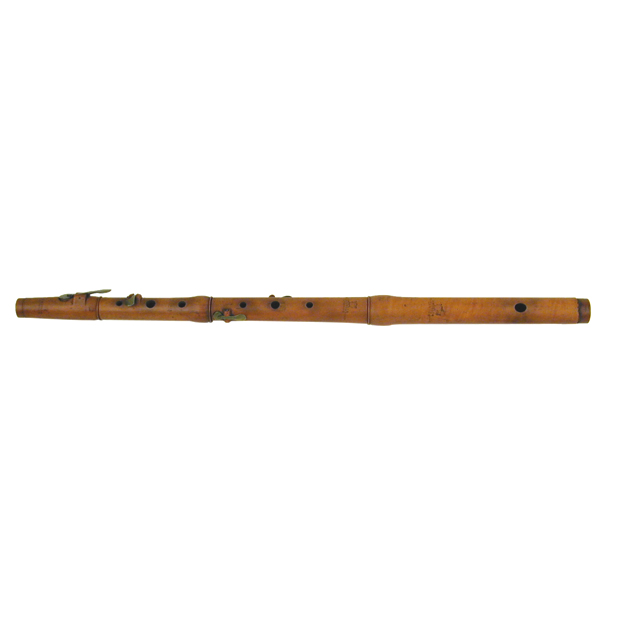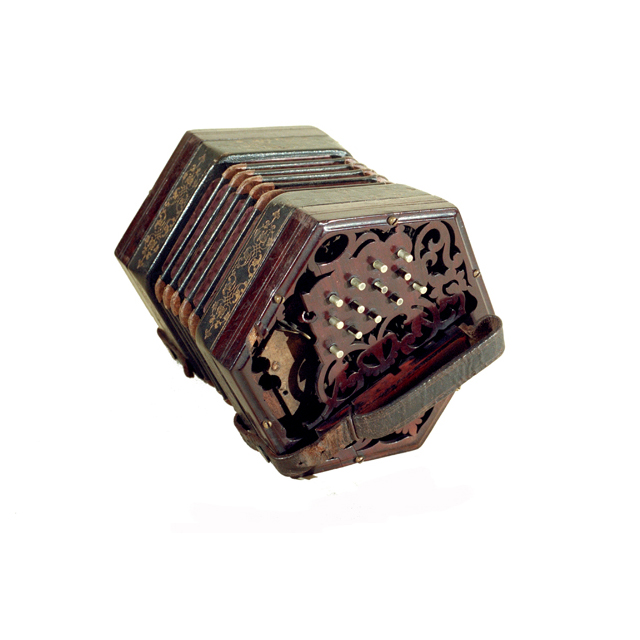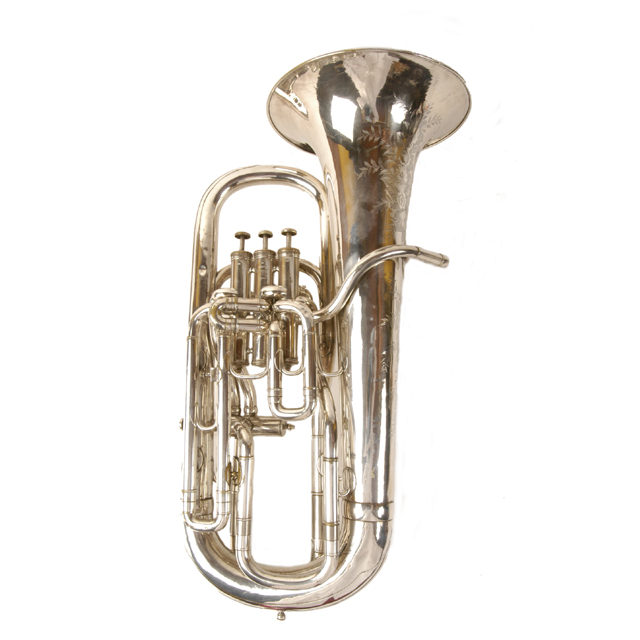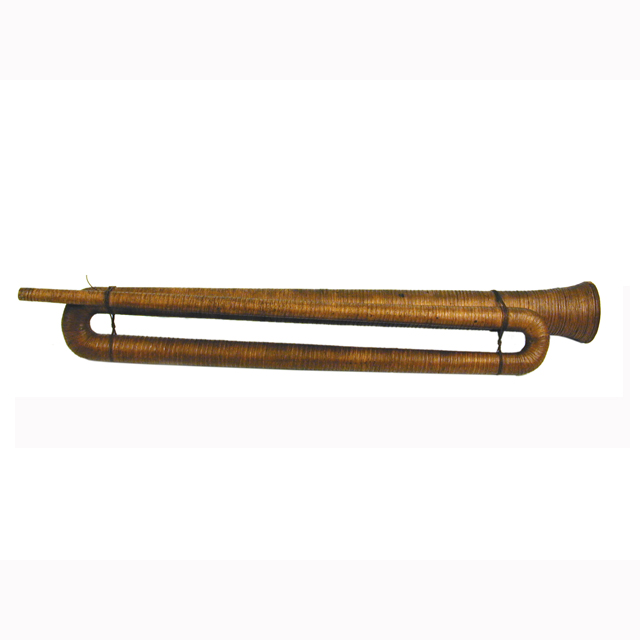
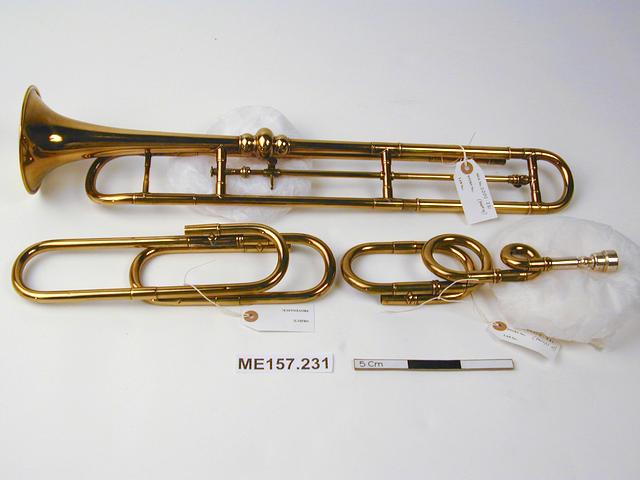
Slide trumpet, 'Prototype' model. Brass with nickel-plated inner slides. Slide on back branch with handle and return mechanism mounted centrally on three stays. Elastic cord return mechanism housed within central sliding assembly with finger pull and screw tensioner at distal end. Tuning slide on front branch has one stay and is angled slightly outwards to avoid the bell. Three-lobed boss on bell stem. With five crooks and silver-plated mouthpiece. Engraved/stamped on bell and mouthpiece: 50 MEDALS OF HONOUR FB "Prototype"
The slide trumpet was popular in Britain in the 19th century. The slide projects out of the back of the instrument and is pulled back with two fingers using the spring loaded central rod. The earliest slide trumpets used clock springs for this return mechanism, apparently because Richard Woodham, the first man to make the instrument was a watchmaker by training. However, these required large circular casings, fitted between the two yards in a figure-of-eight formation. This 'Prototype' model was one of a number of designs to appear in the 1880s, which did away with the clock springs in favour of a helical metal spring or an elastic cord inside the tube of the central slide.



